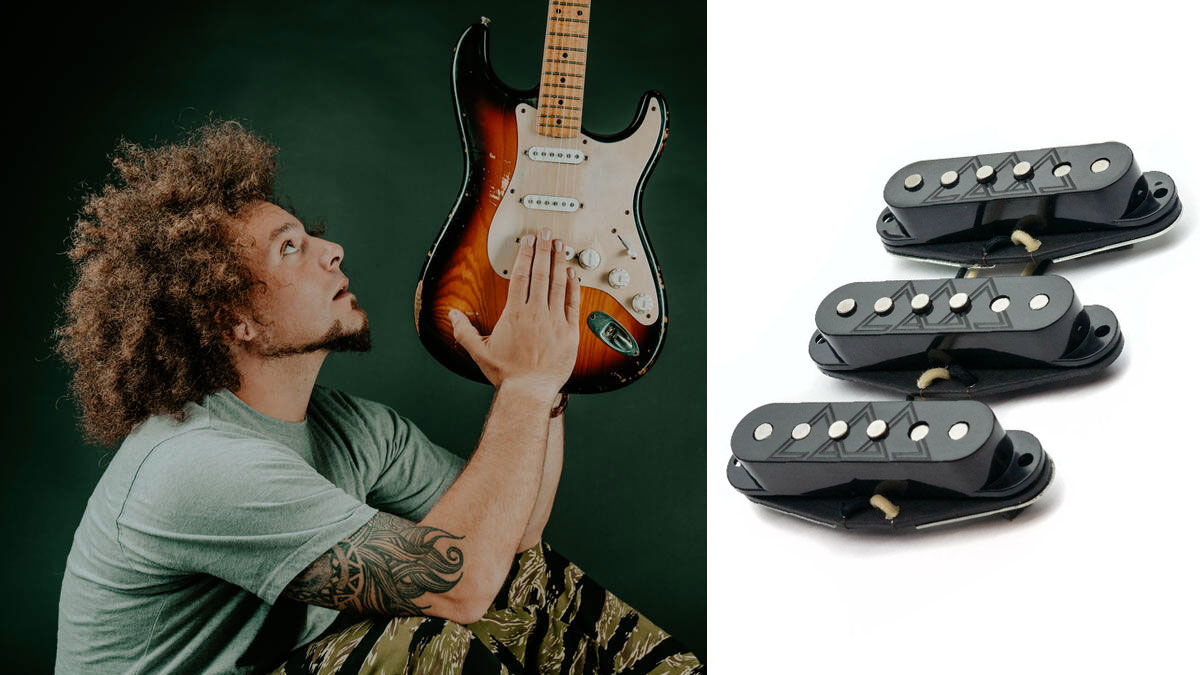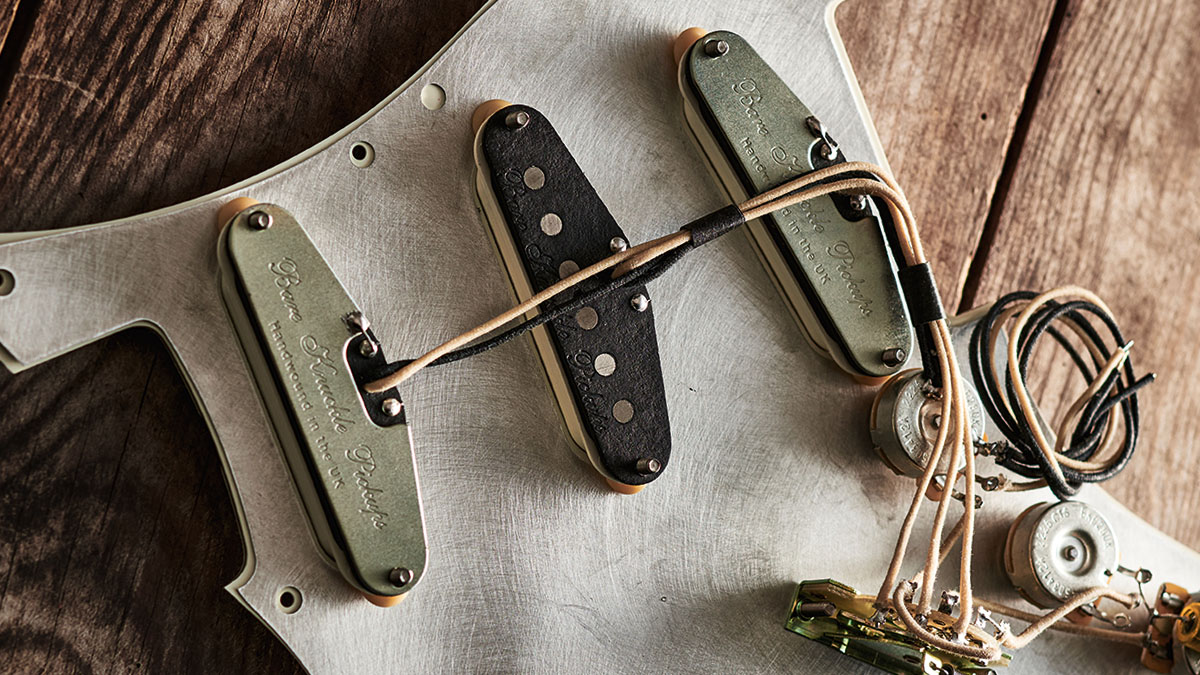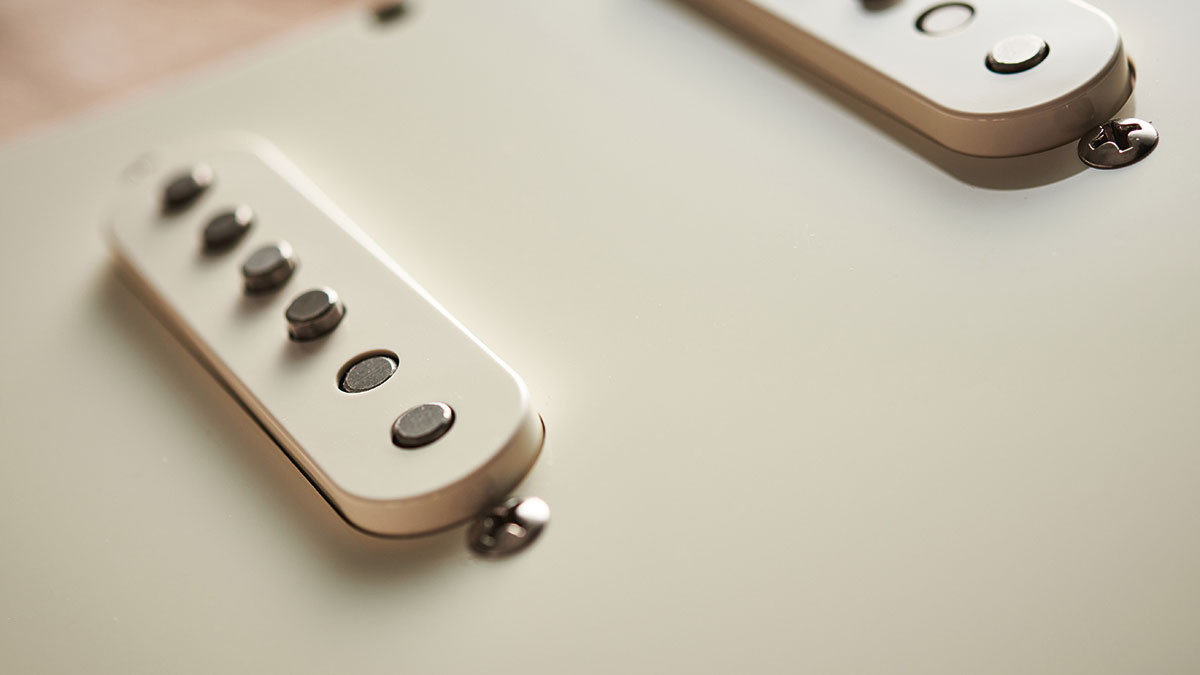“It’s really taken off – Rabea Massaad has introduced players to a new way of delivering tone from a Strat”: How Bare Knuckle redefined the sound of the Stratocaster with its radical new Triptych single coils
How the tones of Stevie Ray Vaughan, John Mayer and Philip Sayce informed a signature set of single-coil pickups for one of guitar's most progressive players

There is nothing off-the-peg about the guitar playing of Rabea Massaad. Voluminous of hair, visionary of mindset and almost permanently viral for his jaw-dropping online videos, the FrogLeap guitarist was never likely to settle for factory-spec Strat coils.
Sure enough, the search for a bolder tone led him to the door of Tim Mills, MD of Cornwall’s acclaimed Bare Knuckle, and to the birth of the Triptych set that is rapidly becoming the mod of the moment.
There’s quite a buzz surrounding the Triptych.
“Yeah, absolutely, it’s really taken off – in part because Rabea has just brought a different angle to Strat playing and introduced a lot of players to a new way of delivering tone from a Strat they wouldn’t necessarily think of. And that was very much part of the brief: to not just make another vintage-accurate set. Rabea gave me a wishlist of classic tones, but he also needed to be able to handle the modern applications he’s called on to do.”
What touchstones did Massaad give you?
“Having done a lot of work with him on the Silo humbucker set, I’m very familiar with where Rabea comes from in terms of tone. The remit for the Triptych was primarily the line-up of Stevie Ray Vaughan, John Mayer and Philip Sayce. Certainly, Philip and Stevie are very fierce Strat players, and then John has a slightly politer approach. The Triptych had to be able to handle heavy stuff and work with copious amounts of fuzz and various drives.”
A post shared by Rabea Massaad (@rabeaafro)
A photo posted by on
What are the defining features of the Triptych?
All the latest guitar news, interviews, lessons, reviews, deals and more, direct to your inbox!
“It’s quite unusual because I ended up using an Alnico III-powered bridge coil. A lot of people would be surprised at that, because Alnico III is one of the weaker forms of Alnico. But because it doesn’t have a massive amount of pull, you actually end up with quite a bit more dynamic range.
“Also, it allows me to push the wind a little bit harder, so I can fatten out the highs, which is something Rabea really likes. But it’s a hybrid set, essentially, because we stayed with Alnico V in the middle and neck – partly to keep the brightness in those positions because he wanted a more traditional neck and middle tone so he could get those classic SRV and Sayce tones. You know, really hollow and tubular, but they also have enough output to really drive.”
Tell us about your use of baseplates in the Triptych.
“Fitting baseplates to Strat coils is not a new idea, by a long shot – it’s something Leo Fender tried to do literally from the outset, but I assume it was dropped on a cost basis. But adding a baseplate alters the induction because of adding more steel mass underneath the coil. It also widens the magnetic field, so it gives you more of just about all of the frequencies.
“A lot of people think it just adds power and bottom-end, but when you sit back and analyse it, it’s actually pushing all the frequencies. Rabea settled on just having them on the bridge and neck and having the middle without a baseplate.
“The middle coil on a Strat can actually be quite strident, and he felt adding a baseplate would interfere too much with his in-between tones. He wanted to retain that hollow ‘cluck’ you get with a RWRP middle coil.”


Were there changes made along the way?
“I dialled in the wind pretty much straight away because, again, I’m very familiar with Rabea so I knew where he’d want to go with this. The only real changes were exploring the baseplates, and we initially went with heavy Formvar then made a move to plain enamel.
“A lot of people will say there’s no difference – but there is a marked difference in tone. Heavy Formvar has a bigger cross-sectional diameter, so for the same given number of turns, you actually get a bigger coil, so it produces a cleaner sound.
“By comparison, with plain enamel, for the same number of turns, the coil is slightly smaller, it’s a little bit more focused and this is an odd word, but I’d describe it as having more ‘hair’. It’s kind of dirtier, but that doesn’t mean it’s distorted. It’s a more organic tone. And once we did that, it ticked all the boxes.”
Rabea was absolutely over the moon with the final version. He put together this incredible demo track and sent it over. It was just jaw-dropping
How did the Triptych go from the workbench to the world?
“We nailed it down, but then Bea got so caught up in the touring cycle that we were never able to launch it. But that meant he was able to field-test the Triptych with his main Strat on various projects, recordings and tours. So when he finally had a window and we could put all the assets together for a proper launch, the Triptych had really been out in the world for a long time and we were 100 per cent happy with it.
“Rabea was absolutely over the moon with the final version. He put together this incredible demo track and sent it over. It was just jaw-dropping. He said, ‘This is what the Triptych brought out. It brought out me…’”
What would you say to a Strat player who is considering the Triptych single coil pickup set as a mod?
“I suppose it boils down to your application. The Triptych is not going to be for everybody. But I could put them in a Strat, hand it to a blues player and they’d be right at home. I think the feel is quite familiar. It’s more what the Triptych is capable of handling.
“A lot of Strat coils, in the way they’re wound, once you start putting on a lot of gain, they can start getting very bright. You won’t find that with these. They fatten up. They get really juicy, but if you back off the volume a little, all the classic tones are in there. I’d say that a lot of Strat players would be very comfortable. But for people that have more modern applications and steer well clear of vintage Strat coils – they’ll love these because you can go as heavy as you like with them.”
- For more information on the Triptych, head to Bare Knuckle Pickups.
Henry Yates is a freelance journalist who has written about music for titles including The Guardian, Telegraph, NME, Classic Rock, Guitarist, Total Guitar and Metal Hammer. He is the author of Walter Trout's official biography, Rescued From Reality, a talking head on Times Radio and an interviewer who has spoken to Brian May, Jimmy Page, Ozzy Osbourne, Ronnie Wood, Dave Grohl and many more. As a guitarist with three decades' experience, he mostly plays a Fender Telecaster and Gibson Les Paul.



